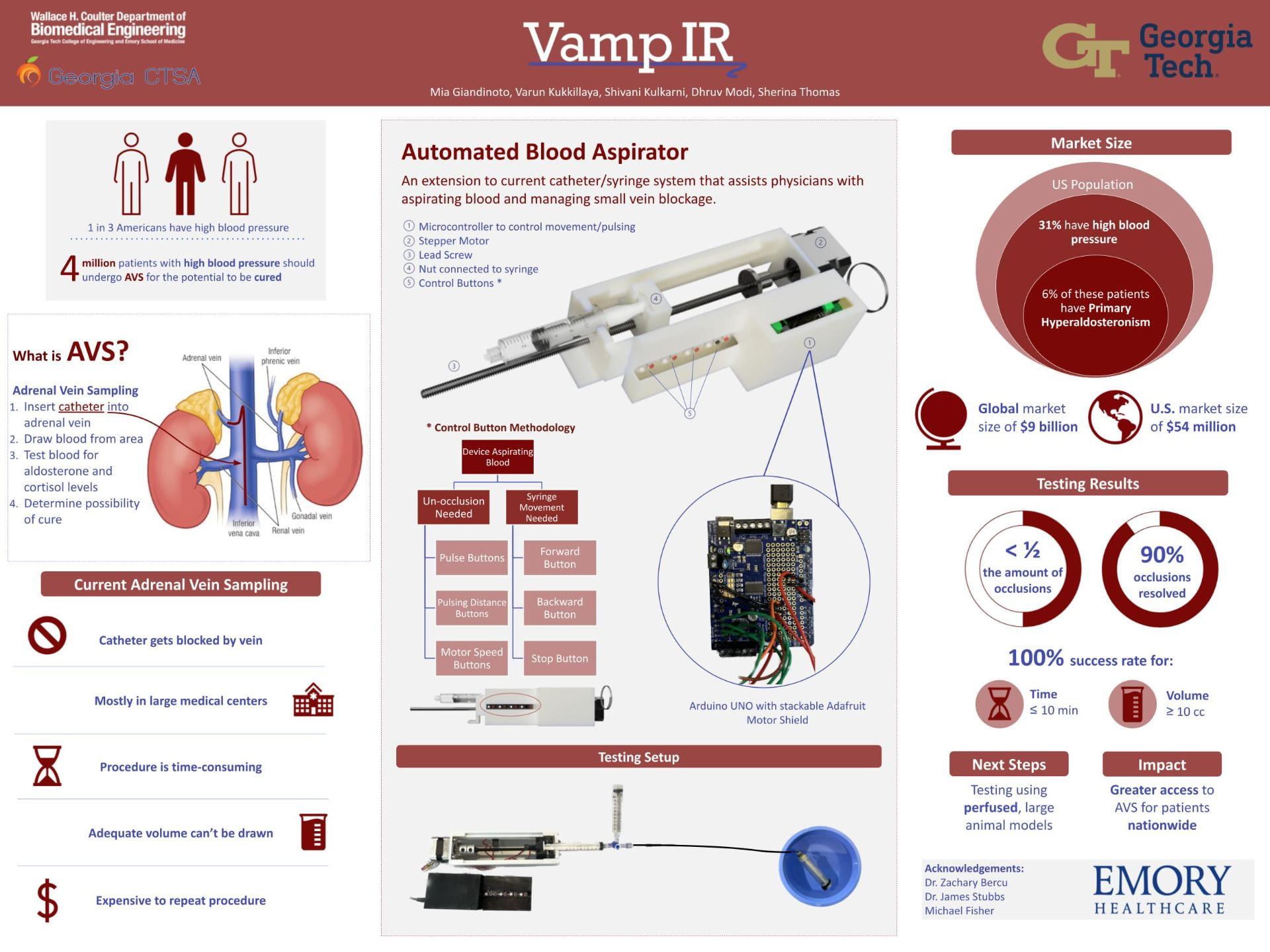Get to know our team on LinkedIN:
Mia Giandinoto, Varun Kukkillaya, Shivani Kulkarni, Dhruv Modi, Sherina Thomas
Vamp-ir
A device that automates aspiration and manages occlusion during adrenal vein sampling.
Project Description:
Multiple endovascular procedures in increasing demand involve aspirating blood from small vessels anywhere from 20-65 cm away. Adrenal vein sampling (AVS) is one such procedure, performed by Interventional Radiologists (IRs) to determine which adrenal gland is responsible for disease in primary hyperaldosteronism. The procedure involves inserting a catheter into the adrenal vein and aspirating blood to send for further testing. Depending on results, patients have the potential to receive a life-changing cure.
This device aims to solve the primary issues IRs face when performing AVS. Based on user interviews, blockage of the catheter opening and long procedure times were areas of major concern.
Acting as an extension to the catheter/syringe system that IRs currently use, key components of this device include a stepper motor, lead screw, and nut, together allowing for controlled movement of the syringe. The device also contains 9 buttons divided into 4 sections. Each section of buttons controls one of four parameters: the speed of the stepper motor, direction, distance while pulsing, and whether the motor is on or off. The device’s controlled movement aims to prevent occlusion altogether; however, in the case that the physician observes signs of catheter blockage, they can manually press one of the buttons. This will adjust the movement of the stepper motor and consequently the syringe. Limit switches have been placed at the extreme ends of the device to ensure accurate and precise fluid collection.
Overall, along with simplifying the procedure for physicians, this device potentially reduces the chance of repeat procedures being performed, eliminating excess cost and paving the way to increasing access to AVS for patients nationwide. Other procedures requiring aspiration from small vasculature could also benefit from usage of this device.



